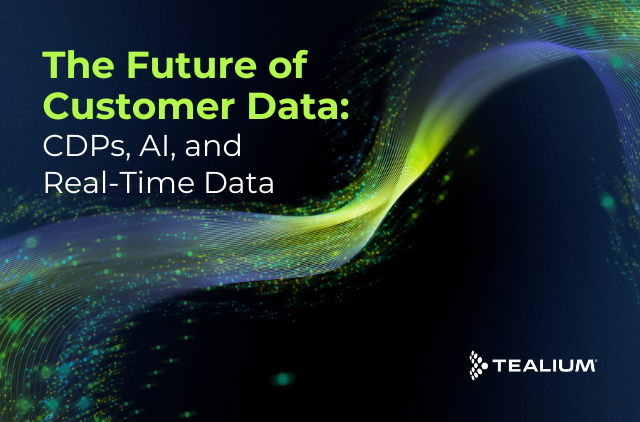 This is a guest post on life sciences marketing from Tealium’s certified partner, Indegene, a technology-led healthcare solutions provider. They combine deep industry expertise with fit-for-purpose technology in an agile and scalable operating model. Many of the leading global healthcare organizations rely on
This is a guest post on life sciences marketing from Tealium’s certified partner, Indegene, a technology-led healthcare solutions provider. They combine deep industry expertise with fit-for-purpose technology in an agile and scalable operating model. Many of the leading global healthcare organizations rely on  them to deliver effective and efficient clinical, medical, and commercial outcomes every day. From strategy to execution, they enable healthcare organizations be future-ready.
them to deliver effective and efficient clinical, medical, and commercial outcomes every day. From strategy to execution, they enable healthcare organizations be future-ready.
Sharanjit Singh is their Director of Strategic Solutions and has co-authored this blog with Jay Calavas.
Life sciences marketing has undergone immense transformation over the last few years. Organizations have realized that there is a need to re-design and evolve their commercial models to deliver maximum impact. This warrants a need for integrated data and its curation, that can then be leveraged to deliver a more customized experience for patients, HCPs, and other healthcare stakeholders.
Customer-facing teams can use this data to approach their audiences with a better understanding of their needs, segmenting customer groups in a dynamic way, and accordingly aligning their messaging.
This also requires brand teams and marketers to adapt their approach towards creating a deeper understanding of customer data and its use to determine messaging.
Marketers must now understand:
- Fast-changing health systems and customer needs
- Complex challenges in promotional strategies such as digital enablement and multi-channel messaging
- Changing customer expectations, content requirements, and experiences
First party data can help fulfill these key priorities
Brands operating across regions have to follow rigid regulatory guidelines to maintain privacy, and therefore externally available and unvalidated data poses a risk to life sciences marketing communications. Hence, life sciences marketers have sourced data from their own efforts of sales representatives, events and surveys, and owned websites. This data has been used to locally advertise with endemic programmatic methods to a large extent.
Along with this, through CRM tools and mass-marketed methodologies, third-party data providers such as Google, Facebook (which are traditional advertising platforms), have also provided behavioral data to life sciences marketers – albeit not with the industry precision and compliance that is needed.
Combined together – the owned and third-party data approach has been used extensively across life sciences organizations to craft their marketing messages to their audiences. However, this has been rather siloed, disconnected within organizational teams, and not integrated with the overall commercial goals of most life sciences brands.
As third party data gets phased out, first party data will prove its importance
Beginning 2023, Third party data will become obsolete, and here is where first party data or self-curated data will show its true value to the life sciences industry. It can fill not just the gaps between disparate and disconnected data pools, but also orchestrate multi-channel and personalized marketing to the HCP audience. But this requires life sciences marketers to have a well-planned customer data platform (CDP) and first party data strategy.
Why is first party data better for life sciences?
For an industry which is largely operated via close in-person and personalized digital interactions, first party data via direct customer touchpoints becomes a valuable source of insights. It provides validated, compliant, and relevant information – which can then be used to drive further engagement for HCPs.
A huge amount of behavioral information is generated when HCPs and patients engage on websites emails, CRM tools, social media, subscription lists, sales interactions, customer feedback forms, etc. Life sciences brands having their own marketing channels and connected data warehouses can collect such data inflows across several touchpoints and store it in a central warehouse (Customer Data Platform or CDP).
Customer Data Platforms (CDPs) are an effective way to execute first party data strategies tied into customer experience goals
The life sciences industry needs smarter and effective marketing, which is data compliant, has customer consent, and also is highly relevant and personal.
This is where CDPs matter. A robust CDP provides insights into customer interests and attrition, channel engagement, and their customer journey. With this level of insight, CDPs help marketers deliver relevant, real-time and personalized communication to HCPs and patients. More importantly, this communication is regulatory compliant, valid and derived from credible sources – which matters in this industry the most. As a result, marketers can optimize their spend, while reducing the delivery of unrelated messaging and ads to their audiences.
CDPs have a few key benefits particularly for life sciences:
- Controlled data security: While collecting first party data there is complete control of inflow and rule-based gathering. All customer information is scrubbed and curated in a secure environment and protected by encryption. Therefore, first party data is extremely compliant with data privacy regulations, which is an industry requirement for all life sciences marketing communication.
- Unique identifiable information for customers: First party data gives marketers unique and specifically identifiable information – collected into a Single Customer View (SCV) dashboard. Over time, as the customer profile data enriches, it generates more granularity and detail and provides behavioral analysis and decision likelihoods.
- Data standardization and efficiency: With standard data rules across brands, geographies and functions, first party data creates uniform and centralized customer data stores across systems. This not only creates a uniform data view across brands, teams and regions, but in effect brings out standard data practices enterprise-wide.
- Regulatory Compliance: Rule compliant data flows and identity management guidelines for both global and local regulatory compliances can be managed with real-time data curation in CDPs. Compliance with globally recognized regulatory guidelines such as General Data Protection Regulation (GDPR) and California Consumer Privacy Act (CCPA), in addition to numerous other local regulations, ensure that data is appropriately siloed and consent-managed, eliminating sanctions or fines from local regulatory authorities.
- Granular data and insights: Marketers can assess customer engagement in real time on the customer dashboard built using first party data. Established KPIs across channels and brands can generate valid and authentic user insights. These can be used to drive the next best actions and predict behaviors as well.
- Future-ready MarTech ecosystem: By designing a connected ecosystem of content, channels and campaigns powered by data driven insights and reporting, first party data lays the foundation of a future ready MarTech ecosystem. For the life sciences industry, this is directly linked to CX and commercial strategic priorities.
This illustration shows how the Tealium AudienceStream CDP captures first-party interaction data and assigns preferred content type badges to HCPs by calculating key message category scores. By analyzing these scores, the CDP can determine the HCP’s preferences. Once the scoring is complete, the CDP assigns a content badge to the HCP based on the highest score and relevant messaging topic. These badges enable organizations to create tailored journeys for HCPs by providing specific details about brands or topics that are likely to appeal to them.
And this is where our partner Tealium comes in. By collecting and unifying data across channels in real-time, Tealium helps Healthcare providers deliver personalized and specialized care to patients, members and pharmaceutical providers. With Tealium, many healthcare and life sciences organizations are able to create a corporation-wide data foundation across all their properties while ensuring customer data is secure and protected in a HIPAA-compliant, private cloud deployment.
Digital and offline data are combined seamlessly in a marketer-friendly tool, making the first party data the primary source for 1-to-1 marketing. Tealium provides turnkey integrations to over 1,300 tools in the MarTech ecosystem, including major life sciences technology partners such as Veeva, DMD, PulsePoint and Doceree, orchestrating cross-channel experiences in real-time.
The end result, providing the data and insights foundation needed to shift the life science sector from delivering the best product to patients to delivering better health outcomes to people.
So, how can life sciences marketers get started?
With extensive data curation and customer profile augmentation via CDPs, life sciences marketers reduce their dependence on external or third-party data which is disparate, siloed and lacks authenticity.
However, to get started quickly, industry marketers must focus on a few key areas –
- Invest in first party owned data: Marketers should invest in data collection capabilities for their owned media (offline i.e., surveys, events, and conferences, and online i.e., websites, email, and display). This can be achieved by integrating a comprehensive data management strategy across various channels and content formats.
- Elevate focus on customer centricity: As a strategic priority across the board, life sciences organizations can dramatically reduce churn with their data strategies built around elevating customer experience. A strong centralized push on the CX agenda helps in driving connected data strategies specific to the target segments.
- Position trust as the foundation for building loyalty: The use of first party data provides an opportunity for marketers to re-establish trust with their target consumers. Specially in life sciences, consumer consent and privacy-first approaches are the pillars of building loyalty and transparency.
- Engaging the right experts: Transforming your current data, insights, and marketing strategy may seem daunting at first, but bringing the right experts on board can help ensure that your CDP implementation meets industry standards and works for your very specific needs.
Indegene x Tealium
The Indegene and Tealium partnership offers a proven solution to your marketing transformation and data management goals.
Tealium’s CDP collects and unifies first- (and third-) party data across channels in real time, helping deliver personalized and specialized care to patients, members, and pharmaceutical providers. The Tealium CDP offers life sciences organizations an enterprise-grade data foundation across all their properties while ensuring customer data are secure and protected in a HIPAA-compliant, private cloud deployment. Digital and offline data are combined seamlessly in a marketer-friendly tool, making first-party data the primary source for 1-to-1 marketing.
Indegene’s unique five-stage city planning approach to consulting and implementation ensures that life sciences organizations effectively implement and benefit from their Tealium CDP investment. Starting from a 360-degree analysis of your existing MarTech stack and data model, integrating new and existing tools to your CDP ecosystem, to creating business rules and defining segments, Indegene’s expert consultants customize and implement the Tealium CDP to fit your first-party data strategy. Indegene also evaluates and optimizes the implementation with industry-leading tracking and analytics expertise, giving organizations the capabilities needed to deliver the best cross-channel experiences in real time.
The result is a robust first-party data management and insights foundation that will shift your life sciences organization from a reliance on third-party data sources and providers.
These benefits and opportunities that come from unlocking the power of your first party data can be realized by making a market-leading, future-ready CDP an integral part of your MarTech strategy.
Conclusion
Ultimately, it is vital for life sciences marketers to quickly establish relevance and trust with their HCP audiences. As a world without third-party data approaches fast, marketing leaders must drive strong customer-centric strategies. They must be prepared for a cookieless future. And working with an industry specialist not just helps them approach this with a core customer-centric and privacy-first view – but also enables them to be future ready.
Have more questions on how Indegene works with our key strategic partners to help life sciences organizations understand, engage, and retain customers? We’d love to help! You can also schedule a free demo with Tealium to discuss our certified partner relationship.








